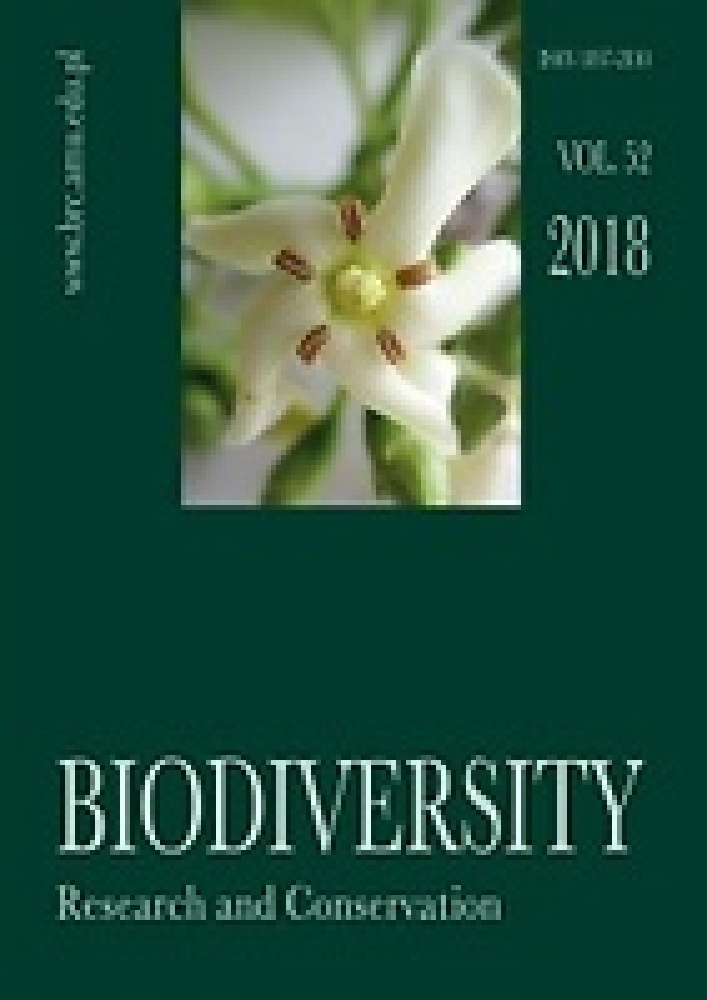Abstract
Pre-Linnaean herbaria have a growing value for botanists and historians of science. A unique example is a four volume herbarium from the early 18th century preserved in the archives of the Herbarium of the Faculty of Biology, University of Warsaw. They consist of one, originally five volume set. We proved that the plants had been gathered by the famous naturalist Georg Andreas Helwing (1666-1748), and his son-in-law, Matthias Ernst Boretius (1694-1738), and they annotated and classified the exhibits. Boretius was born in Prussia, in Lec (now: Giżycko). He acquired his academic training in Königsberg and Leiden, and deepened it by scientific travels. He was the first in Masuria to promote vaccination against smallpox. Earning the reputation of a distinguished scholar, he was appointed Royal Physician and Crown Councilor of the Prussian court. He died in 1738 at the age of just 44, leaving the herbarium vivum – a magnificent remnant of his times. There are over 900 cards with glued specimen, signed in three languages: Latin, German and Polish. It includes vascular plants, liverworts, true mosses, clubmosses, algae and macrofungi. Boretius implemented the system made known by the French botanist Joseph Pitton de Tournefort (1656-1708). His system divided the plant world into 22 classes, based on flower morphology but also retaining the traditional split into trees, shrubs and forbs. The choice of this arrangement by Boretius was an innovation; the earlier plant collections of his tutor Helwing lacked any attempt to classify plant species.
References
Arber A. 1938. Herbals: their Origin and Evolution. A Chapter in the History of Botany, 1470-1670. 362 pp. Cambridge University Press, Cambrigde.
Bennett B. C. 2007. Doctrine of signatures: an explanation of medicinal plant discovery or dissemination of knowledge? Econ Bot 61(3): 246-255.
Bernal J. D. 1957. Nauka w dziejach. 868 pp. PWN, Warszawa.
Bernoulli J. 1779. Reisen durch Brandenburg, Pommern, Preussen, Curland, Russland und Pohlen, in den Jahren 1777 und 1778. Vol. 6. C. Fritsch from: Spalik K. 2014. Pre-Linnaean herbaria viva of Helwing in the collections of the National Library of Poland and the University of Warsaw. Acta Soc Bot Pol 83(1): 13-16.
Boretius M. E. 1722. Matthiae Ernesti Boretii, Observationum exoticarum specimen primum, sistens famosam Anglorum variolas per inoculationem excitandi methodum, cum ejusdem phaenomenis et successibus. Literis Reusnerianis, Regiomonti.
Bowler P. 2007. Historia nauk o środowisku. 488 pp. Wyd. UW, Warszawa.
Brock W. 1999. Historia chemii. 488 pp. Prószyński i S-ka, Warszawa.
Flis S. 1956. Maciej Ernest Borecki (Boretius), znany lekarz mazurski XVIII w. Polski Tygodnik Lekarski 38: 1637-1638.
Flis S. 1964. Panegiryk z pierwszej połowy XVIII wieku ku uczczeniu pamięci Macieja Ernesta Boretiusa (Boreckiego). Komunikaty Mazursko-Warmińskie 4: 514-519.
Magdefrau K. 2004. Historia botaniki. Życie i dokonania wielkich badaczy. Prace Ogrodu Botanicznego Uniwersytetu Wrocławskiego 7(1): 5-357.
Mumford L. 1966. Technika a cywilizacja: historia rozwoju maszyny i jej wpływ na cywilizację. 430 pp. PWN, Warszawa.
Pękacka-Falkowska K. 2012. Johann Philipp Breyne i jego rośliny: nasiona z Niderlandów. Published on the internet http://mobile.wilanow-palac.pl/article/johann_philipp_breyne_i_jego_rosliny_nasiona_z_niderlandow.html [accessed 2018.11.27].
Pisanski G. C. 1886. Entwurf einer preussischen Literärgeschichte in vier Büchern, hrg. von R. Rudolph Philippi. (=Publicationen und Republicationen der Königsberger literarischen Freunde 1, 1790). 284 pp. Hartung, Königsberg.
Ray J. 2014. (1682). Methodus plantarum nova. Translated by S. Nimis, K. Tschantz Unroe & M. Vincent. Introductory commentaries by M. Black, M. Chase & M. Vincent. iv + 182 pp. + 3 plates. Ray Society publication, London.
Rostafiński J. 1904. Prowincjonalne, polskie nazwy roślin XVIII w., z Prus Książęcych głównie z rękopisu Andrzeja Helwinga. 30 pp. Druk. Uniwersytetu Jagiellońskiego, Kraków.
Rostworowski E. 2000. Historia powszechna. Wiek XVIII. 744 pp. Wyd. Naukowe PWN, Warszawa.
Spalik K. 2014. Pre-Linnaean herbaria viva of Helwing in the collections of the National Library of Poland and the University of Warsaw. Acta Soc Bot Pol 83(1): 13-16.
Szafer W., Kulczyński S. & Pawłowski B. 1986. Rośliny polskie. Opisy i klucze do oznaczania wszystkich gatunków roślin naczyniowych rosnących w Polsce bądź dziko, bądź też zdziczałych lub częściej hodowanych. Część I. 464 pp. PWN, Warszawa.
Tournefort De J. P. 1694. Éléments de botanique ou méthode pour connaître les plantes. Imprimerie Royale, Paris, 3 vol. avec 451 tables, + 7 000 espèces sont considérées.
Helwing G. A. 1695-1705. Herbarium Vivum Plantarum sponte in Prussia nascentium. Biblioteka Narodowa, sygn. Rps akc. 200, t. 1.




